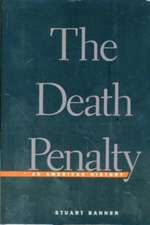The Road to Canada: The Grand Communications Route from Saint John to Quebec: New Brunswick Military Heritage Series
Autor W.E. (Gary) Campbellen Limba Engleză Paperback – 12 mai 2005
Preț: 84.96 lei
Preț vechi: 93.33 lei
-9% Nou
Puncte Express: 127
Preț estimativ în valută:
16.26€ • 17.02$ • 13.45£
16.26€ • 17.02$ • 13.45£
Carte disponibilă
Livrare economică 17-31 martie
Preluare comenzi: 021 569.72.76
Specificații
ISBN-13: 9780864924261
ISBN-10: 0864924267
Pagini: 120
Dimensiuni: 139 x 196 x 7 mm
Greutate: 0.14 kg
Ediția:No.
Editura: Goose Lane Editions
Colecția Goose Lane Editions
Seria New Brunswick Military Heritage Series
ISBN-10: 0864924267
Pagini: 120
Dimensiuni: 139 x 196 x 7 mm
Greutate: 0.14 kg
Ediția:No.
Editura: Goose Lane Editions
Colecția Goose Lane Editions
Seria New Brunswick Military Heritage Series
Notă biografică
Major W.E. (Gary) Campbell has served for over forty years in the Canadian Army (Militia), the Canadian Army (Regular), and the Canadian Forces. He is a PhD candidate at the University of New Brunswick and has obtained a bachelor of arts (history) from the University of Western Ontario and a master of arts (War Studies) from the Royal Military College of Canada. His passion for military history, especially logistics, and his many tours of duty as a transportation officer in the Logistics Branch of the Canadian Armed Forces led to his interest in the Grand Communications Route. Gary Campbell is presently posted to the Combat Training Centre headquarters at CFB Gagetown, New Brunswick, after serving in a variety of line nad staff positions in navy, army, air force, and headquarters units across Canada as well as in the United States and the United Kingdom. He has twice received the Royal Logistics Corps Review Award. He is an active member of the Orders and Medals Research Society, the Military Collectors Club of Canada, and the York-Sunbury Historical Society, and he has served on the boards of the latter two groups.






























